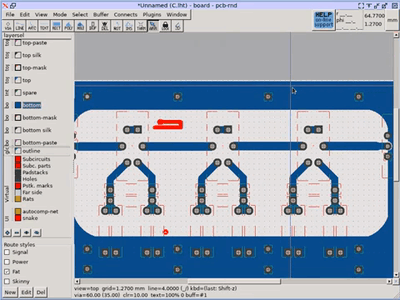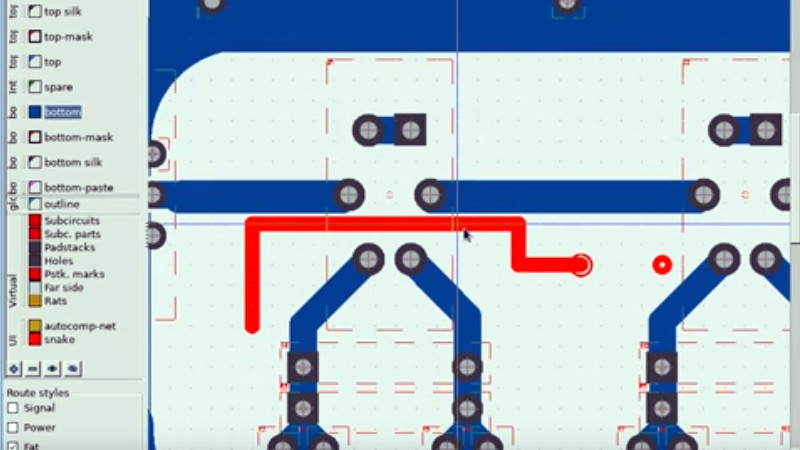When conversation turns to the older Nokia mobile phones, it’s unlikely to be the long battery life or ability to conjure a signal out of thin air that tickles people’s memory, instead it’s the Snake game built into the stock firmware. Snake was an addictive yet extremely simple game in which a line of pixels — the snake in question — was navigated around the screen to eat the fruit without crashing into walls or itself. As the game progressed the snake grew in length, making it a surprisingly difficult challenge. If you hanker for Snake, as [VK5HSE ] writes, you can now play it in a PCB layout.
 The software in question is PCB-RND, a cross-platform open-source PCB CAD tool, and the game is achieved through the magic of user scripting. Simply download the script, run it in your favourite circuit board, and away you go!
The software in question is PCB-RND, a cross-platform open-source PCB CAD tool, and the game is achieved through the magic of user scripting. Simply download the script, run it in your favourite circuit board, and away you go!
We can’t imagine a productive use for this piece of software, but it wouldn’t surprise us to see a snake slithering into a few boards we feature. It does provide a handy reminder though of the power in your PCB CAD tool’s scripting features, something it’s likely not many of us use to their full potential.
We’ve featured [VK5HSE]’s work with PCB-RND before, in a very useful Eagle import tool.
















I first wrote this game in the late 70’s on a TRS-80 Model 1 in BASIC. it was just an array with two incrementing indexes.
Now I know what causes those missing pads and random isolated tracks.
[*] Step 1: snake on a PCB
[_] Step 2: online snake on a PCB
[_] Step 3: group sourced track routing!
[_] Step 4: Route@Home global distributed PCB and IC die routing project.
Actually you could replace those pesky captcha pictures with pcb routing problems…
Those “pesky captcha pictures” are being used already. They send each individual image to hundreds of humans and if 90%+ them agree then it is considered correct. And then they use that image in a training dataset to either train or validate a neural network. So those “pesky captcha pictures” provide for next to free what historically used to cost an absolute fortune.
The great irony here is that by completing CAPTCHA reverse turing tests, we’re training algorithms to beat the current generation of tests. We’re defeating our own arms race.
Snakes on a “plane”…
Yes, but this time it’s a ground plane rather than an airplane!
wait for doom version
An unusual use pcb-rnd, which is an excellent tool in continuous active developmental, frequently introducing new features. I used it extensively for years but currently I’m on a sabbatical from PCB design. I hope to jump back into using pc-rnd later in the year.
Eagle has a snake game as well (type ‘snake’ in the command to try it)